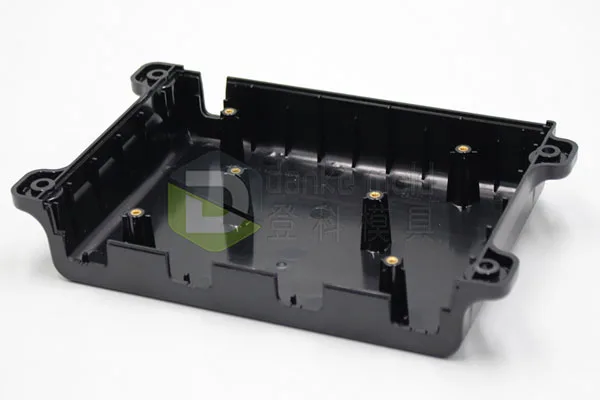Overmolding enables multi-material items to be made using modern injection molding techniques. Strong plastic or metal is covered with soft plastic or rubber. The seamless, multi-layered product improves grip, durability, and appearance. Consumer electronics, automotive, healthcare, and industrial equipment designs employ overmolding. Simple assembly, faster manufacturing, and better aesthetics.
How Overmolding Works
It takes two or more steps to overmold. First, injection molding or other shaping creates a “substrate” foundation component. In a particular mold, a second substance is injected over or around this substrate. The overmolded layer binds to the substrate mechanically or chemically, depending on the components. The same machine may mold both materials in one continuous cycle in multi-shot or two-shot molding configurations, improving accuracy and speed. This method unites the two parts without fasteners or glue.
Material Selection for Overmolding
Material selection is needed for overmolding. These materials strengthen and stabilize. Soft TPE, TPU, or silicone overmold is flexible, comfortable, and durable. To form strong layer bindings, producers must pick materials based on chemical bonding, thermal expansion, and end-use environmental conditions.
Alternatives to overmolding
Though similar, overmolding and insert molding serve distinct functions. Plastic surrounds a metal inlay in insert molding. For plastic structural reinforcement, threaded, or conductive parts, utilize this method. However, overmolding often improves aesthetics, ergonomics, or protection. Two materials are injected into distinct mold areas simultaneously in dual-shot molding. Dual-shot molding is quicker for high-volume production, while standard overmolding is preferable for unique designs and smaller quantities.
Overmolding Design Considerations
To optimize overmolding outcomes, various elements must be considered while designing a component. First, the part shape should facilitate material flow and bonding. Undercuts, grooves, and textures improve layer mechanical interlocking. Overmold layer wall thickness should be uniform to prevent warping or partial filling. Material shrinkage rates are important because thermal expansion discrepancies may cause cracking or separation. Venting and gating must be properly engineered to manage injection flow. Multi-material designs need careful preparation to attach both layers and remove the object from the mold without harm.

Over molding parts
Issues and Limitations
Despite its benefits, overmolding has drawbacks. Unsuitable material combinations may weaken bonding or degrade material. Overmolding tooling and mold design may be complicated and expensive, particularly for accuracy. Overmolding may not work for all geometries because deep voids or delicate features are hard to fill. Manufacturers must also consider lengthier cycle durations for conventional two-step techniques than injection molding. Most of these issues can be solved with good design, tooling, and testing.
The Future of Overmolding
Overmolding is getting more flexible as manufacturing technology advances. New materials, especially bio-based and recyclable polymers, make overmolding more sustainable. Automation in material handling and mold design reduces waste. Smart overmolding methods are being developed to incorporate electronics, sensors, and other functional features directly into molded products, enabling wearable tech, vehicle safety, and smart home gadgets. With these advances, overmolding may remain a production powerhouse.
Conclusion
Overmolding is a strategic manufacturing solution that increases product performance, durability, and design, not simply a soft grip. Manufacturers may enhance ergonomics, assembly time, and product appearance by mixing several materials into one component. Overmolding opens up new opportunities in many sectors with the correct design and material matching.
